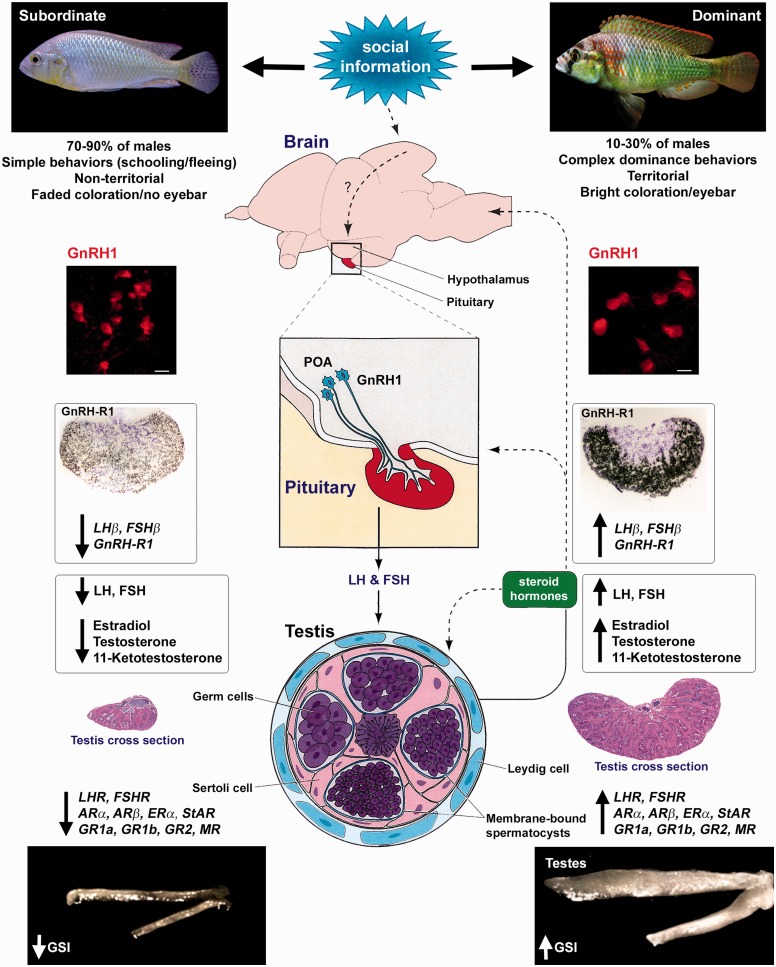Fig. 1.
Summary of socially-mediated differences in the BPG axis between stable subordinate and stable dominant male phenotypes of Astatotilapia burtoni. Dominant males (right) have an up-regulated BPG axis, defend territories, and regularly court and spawn with females, whereas subordinate males (left) have a suppressed BPG axis, do not hold territories, and typically do not reproduce. All of these features are influenced by the social environment and can rapidly change (minutes to days) when males are given a social opportunity to ascend, or rise, to a higher-ranking status. Only those measures directly relevant to the BPG axis are shown. Red GnRH1 neurons represent immunohistochemical staining in the preoptic area of the brain, and GnRH-R1 staining (black label; with purple cresyl violet counterstain) in the pituitary gland is from an in situ hybridization experiment. Italicized genes indicate mRNA levels measured via qPCR. Cross sections of testes were stained with hemotoxylin and eosin. Modified in part from Maruska and Fernald (2011b) and Maruska et al. (2013), and information was compiled from a number of studies (Davis and Fernald 1990; Chen and Fernald 2006; Maruska and Fernald 2010a, 2011a; Maruska et al. 2011; Huffman et al. 2012). ↑, higher relative levels; ↓, lower relative levels. ARα, ARβ, androgen receptor subtypes α and β; ERα, estrogen receptor subtype α; FSHβ, β-subunit of follicle stimulating hormone; FSHR, FSH receptor; GnRH1, gonadotropin releasing hormone 1; GnRH-R1, GnRH receptor subtype 1; GR1a, GR1b, GR2, glucocorticoid receptor subtypes 1a, 1b, 2; GSI, gonadosomatic index; LHβ, β-subunit of luteinizing hormone; LHR, LH receptor; MR, mineralocorticoid receptor; StAR, steroidogenic acute regulatory protein.

